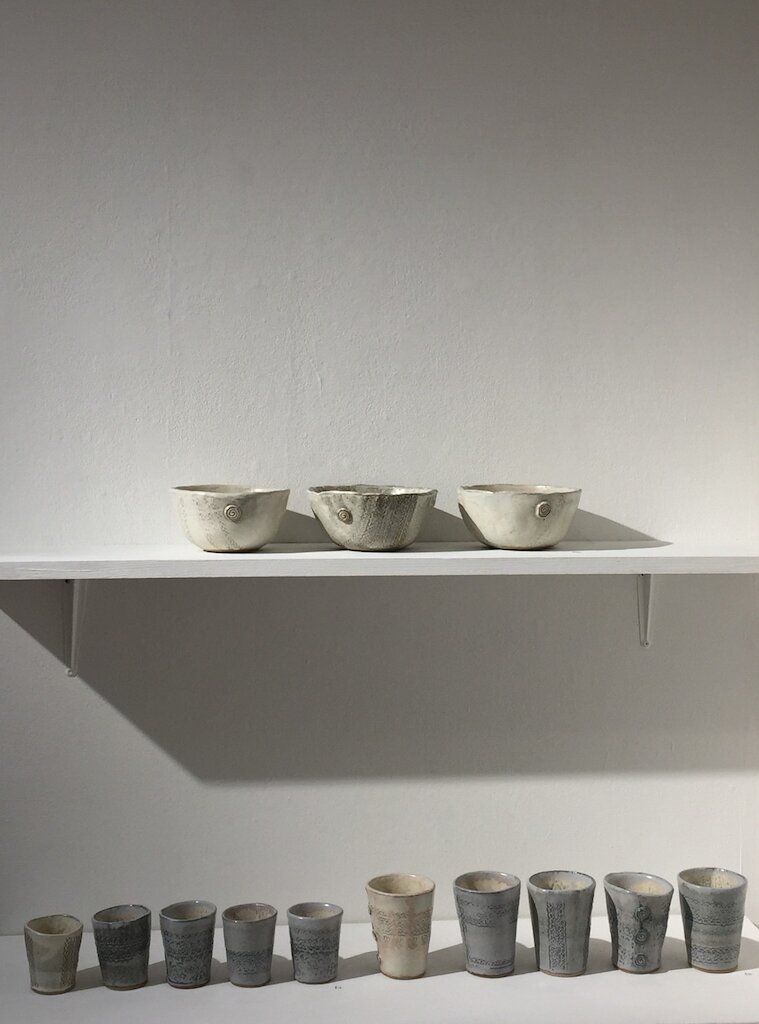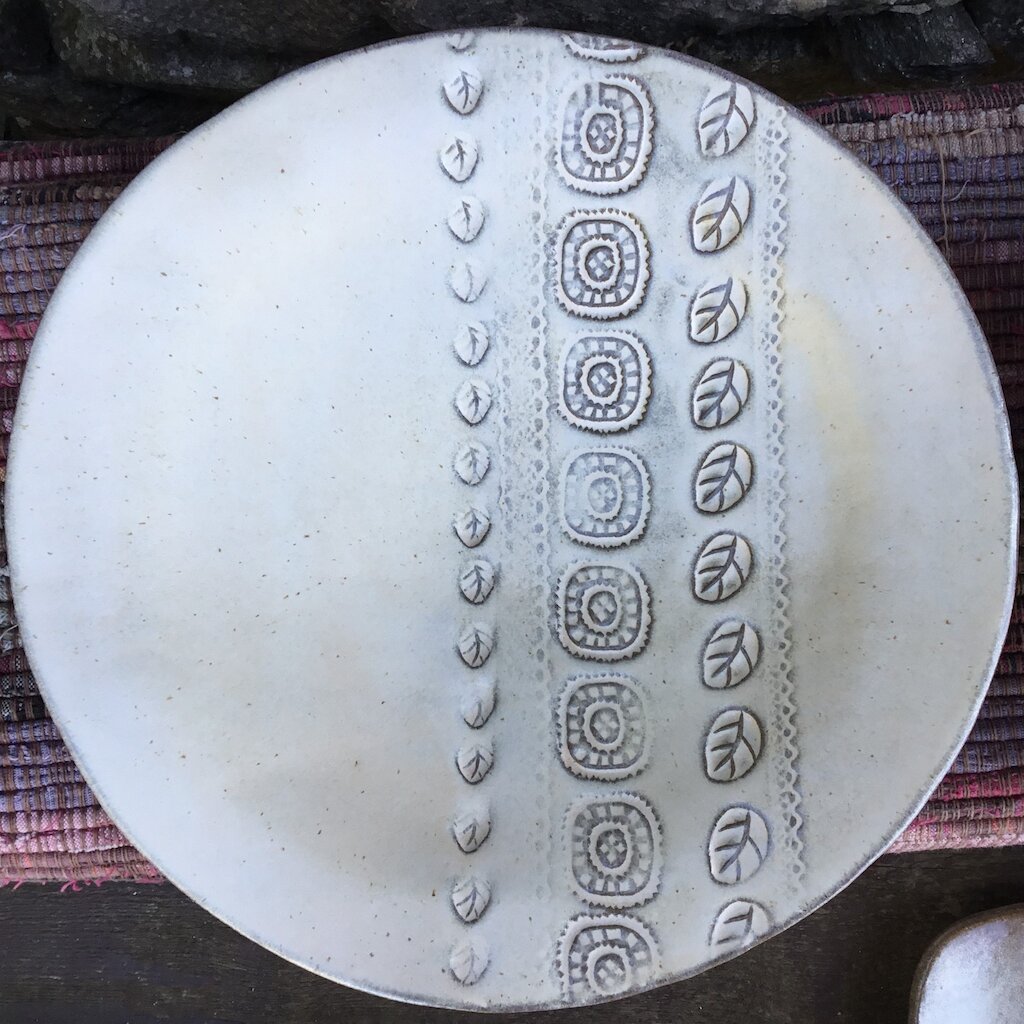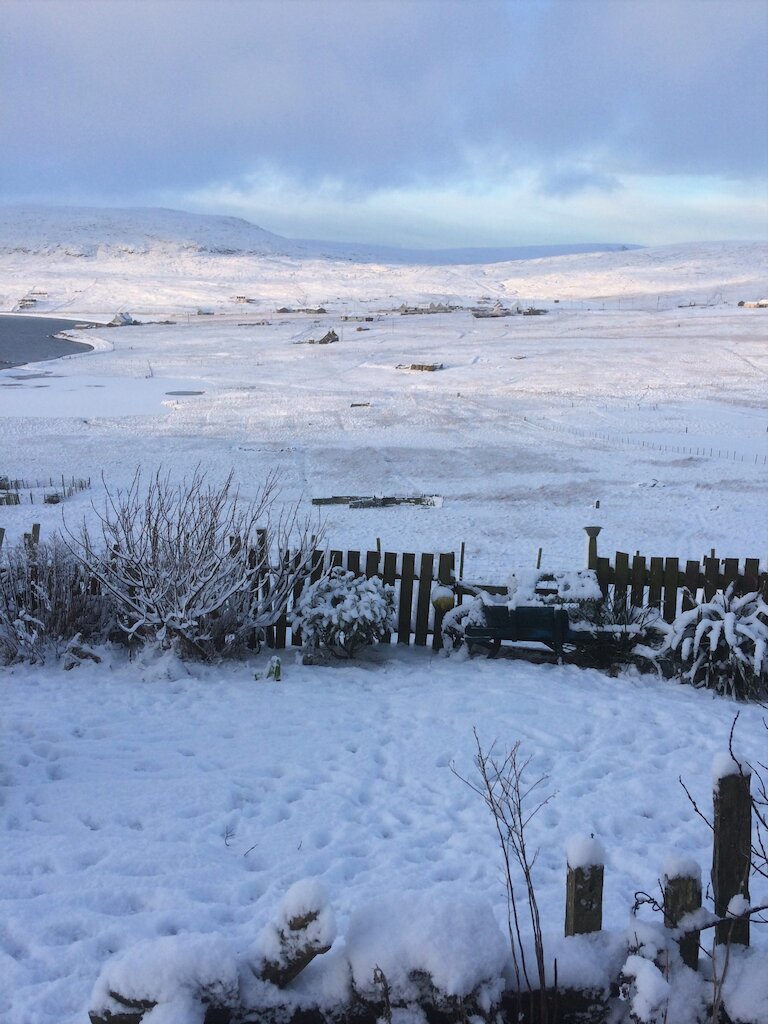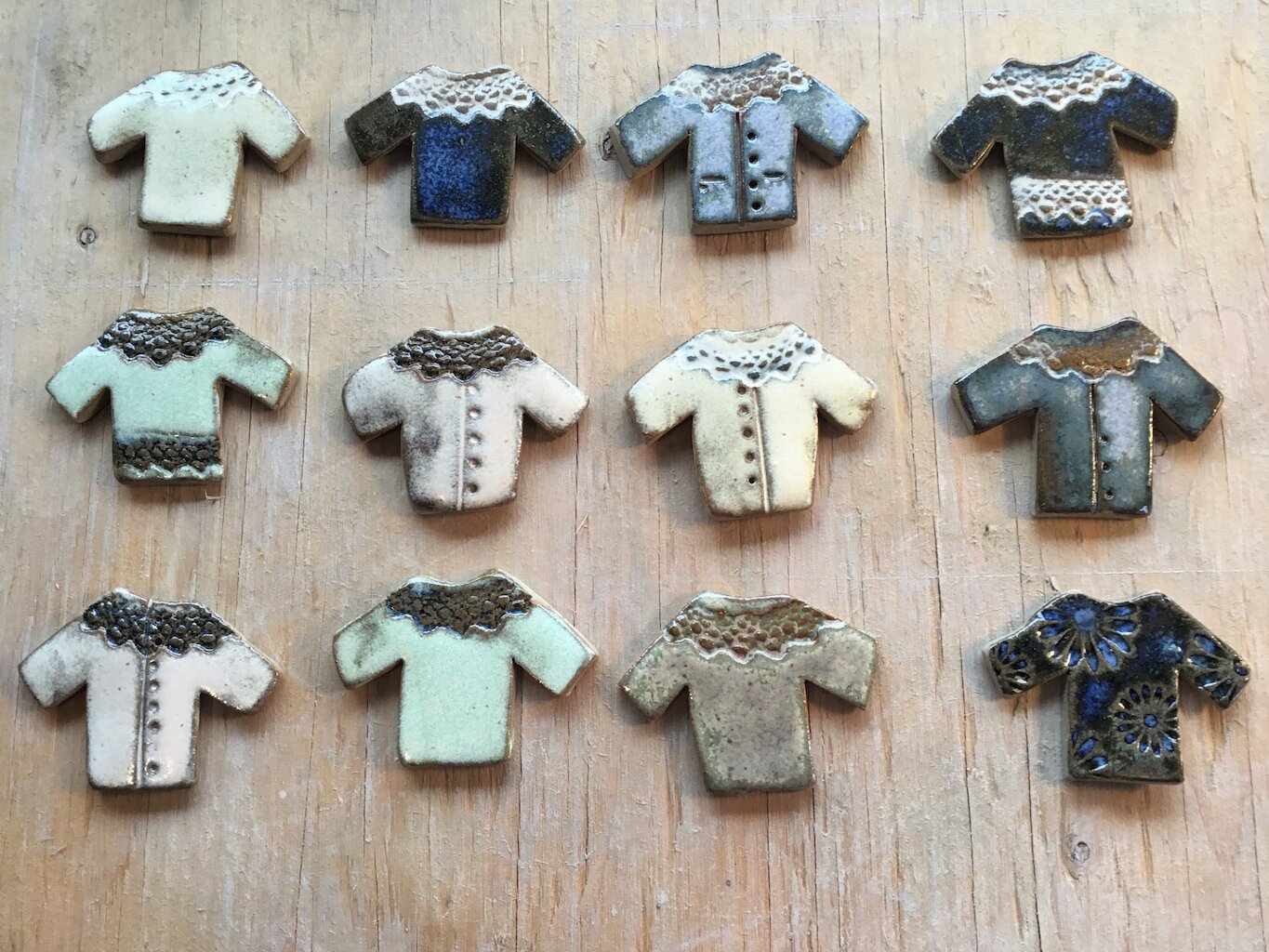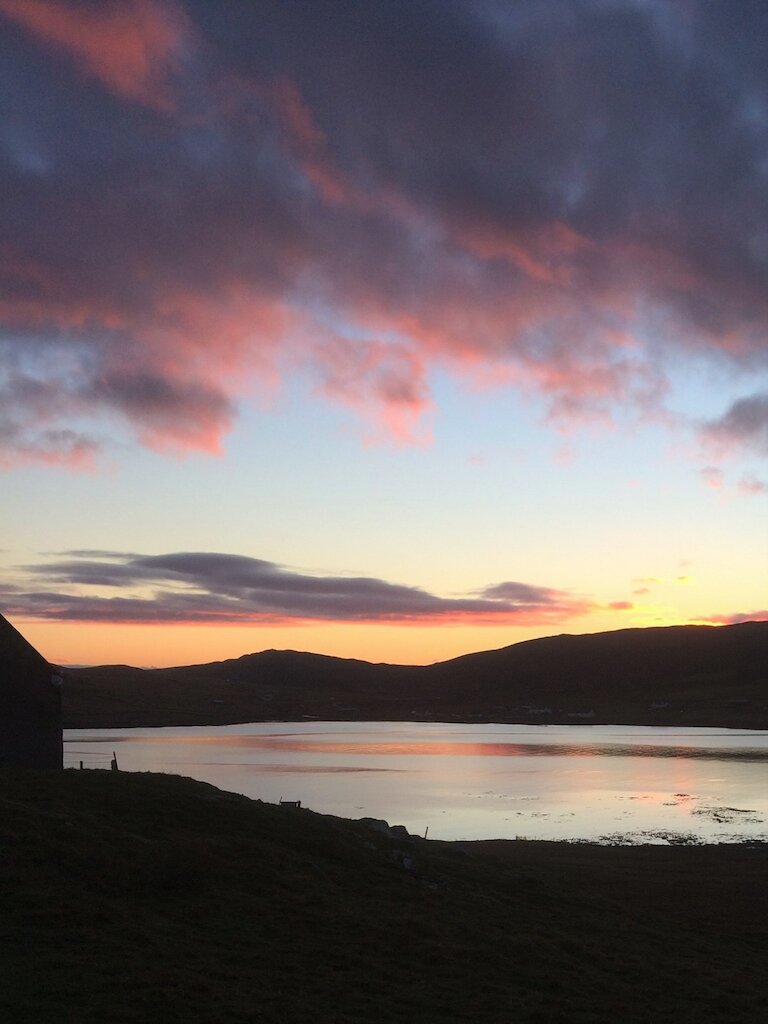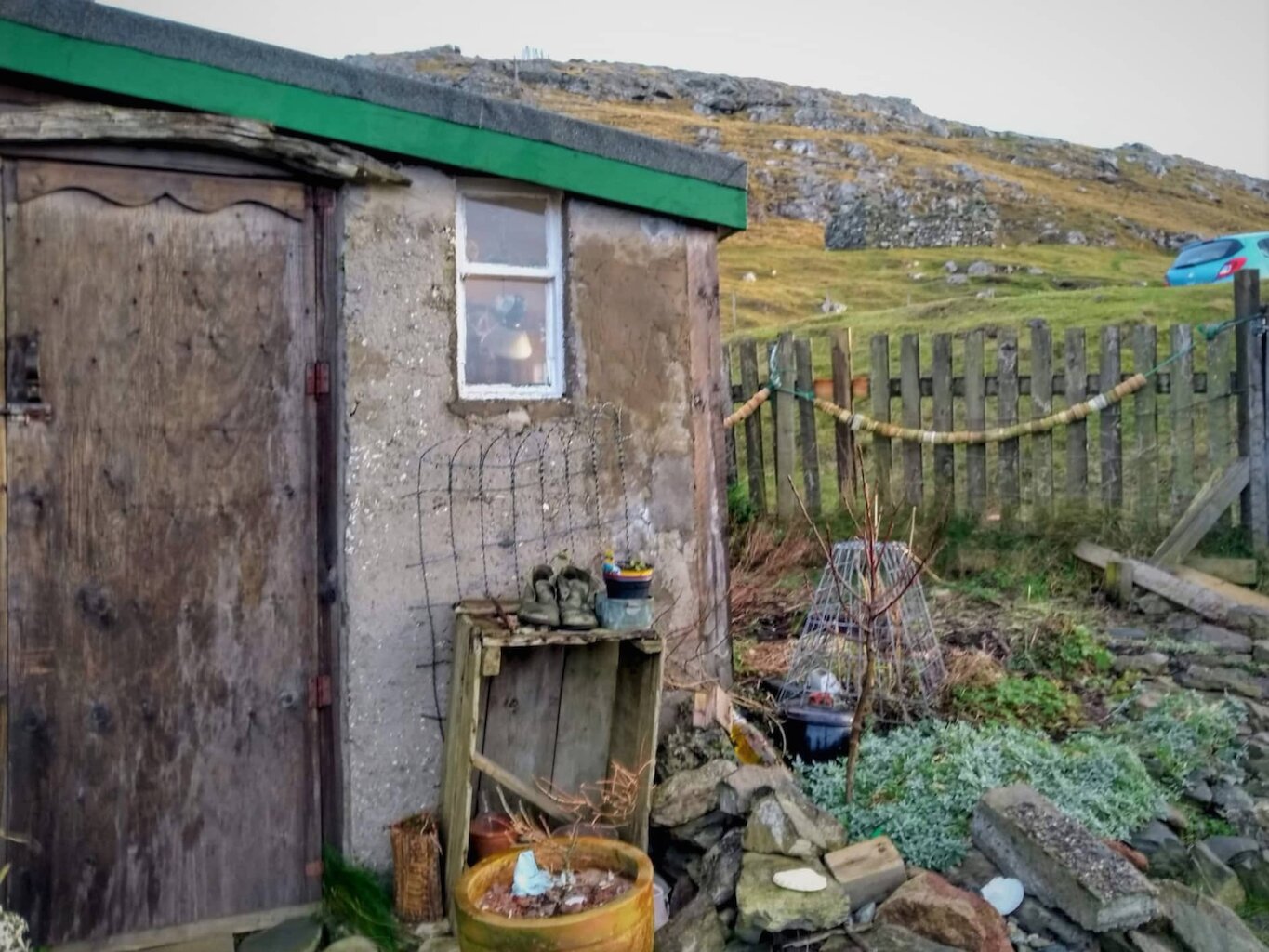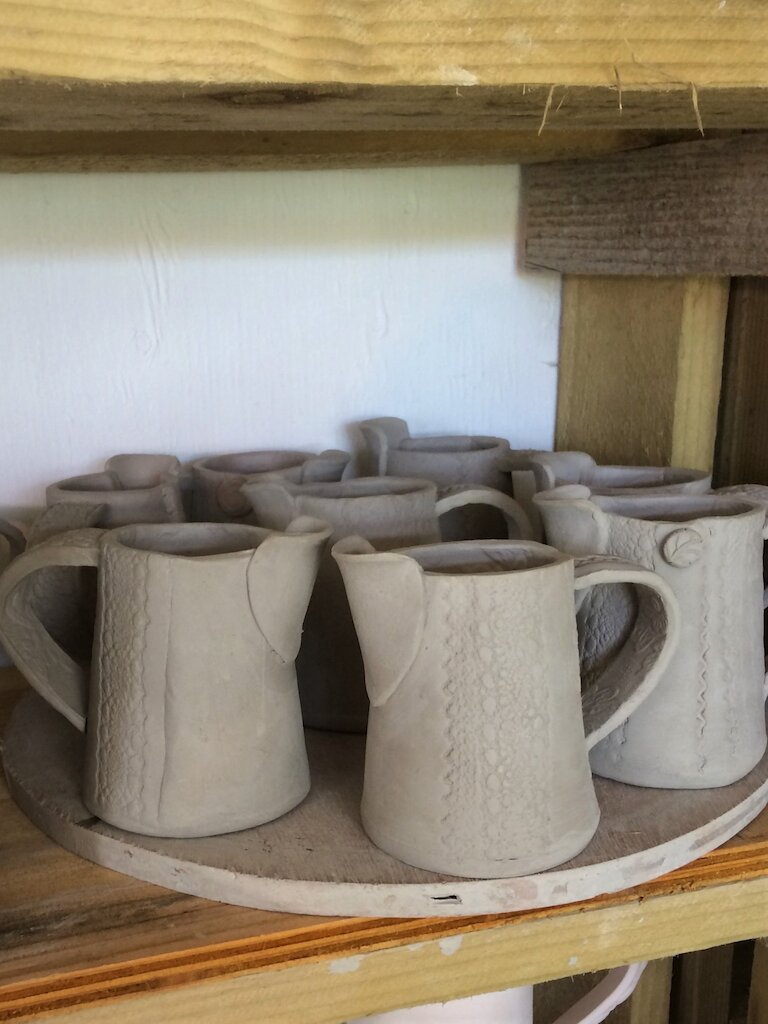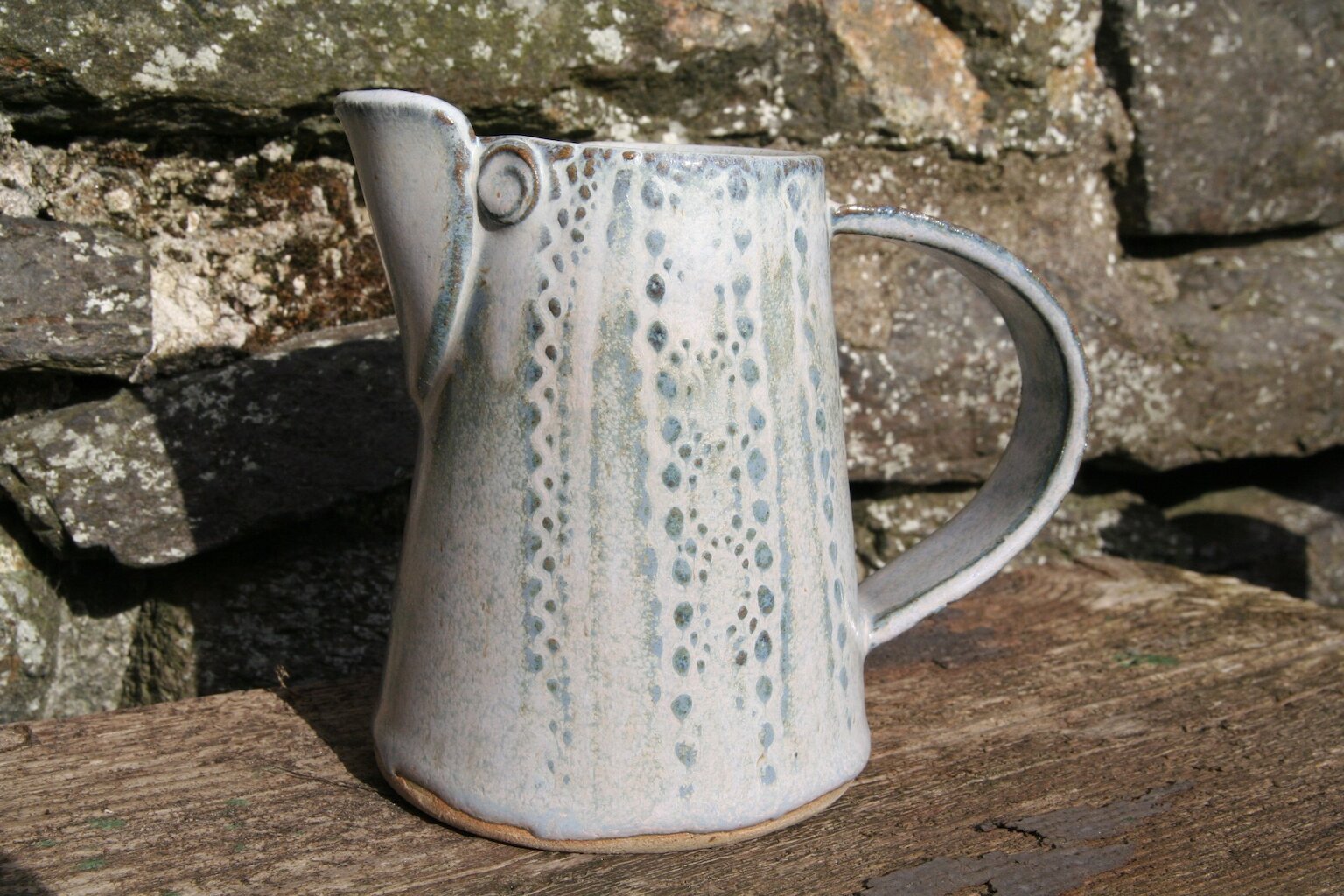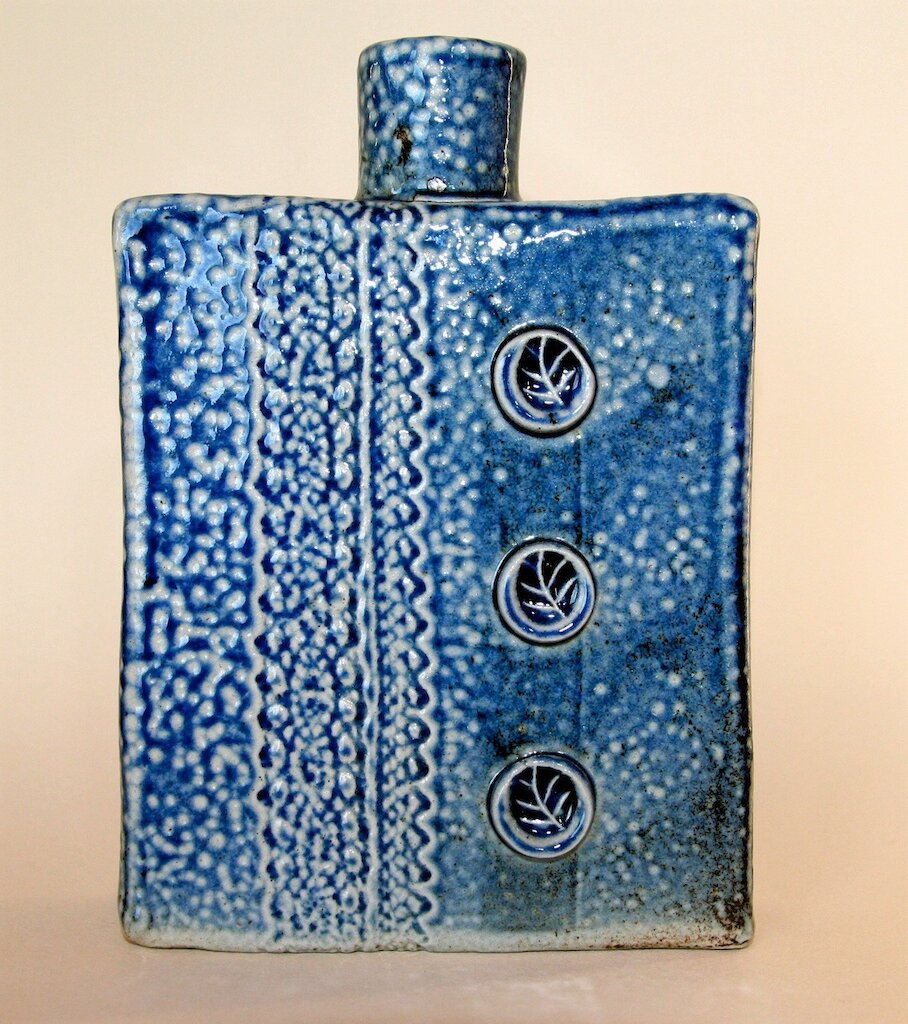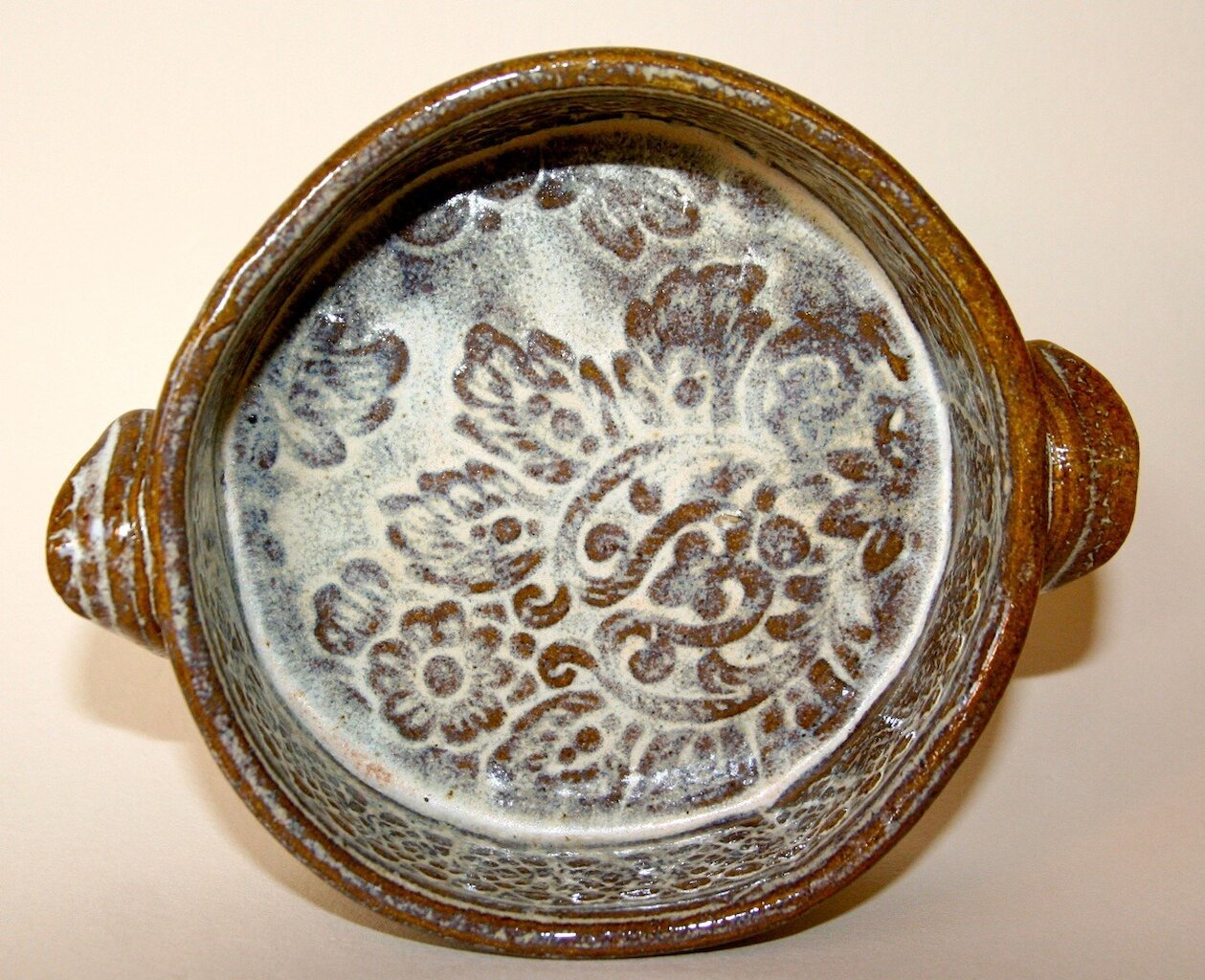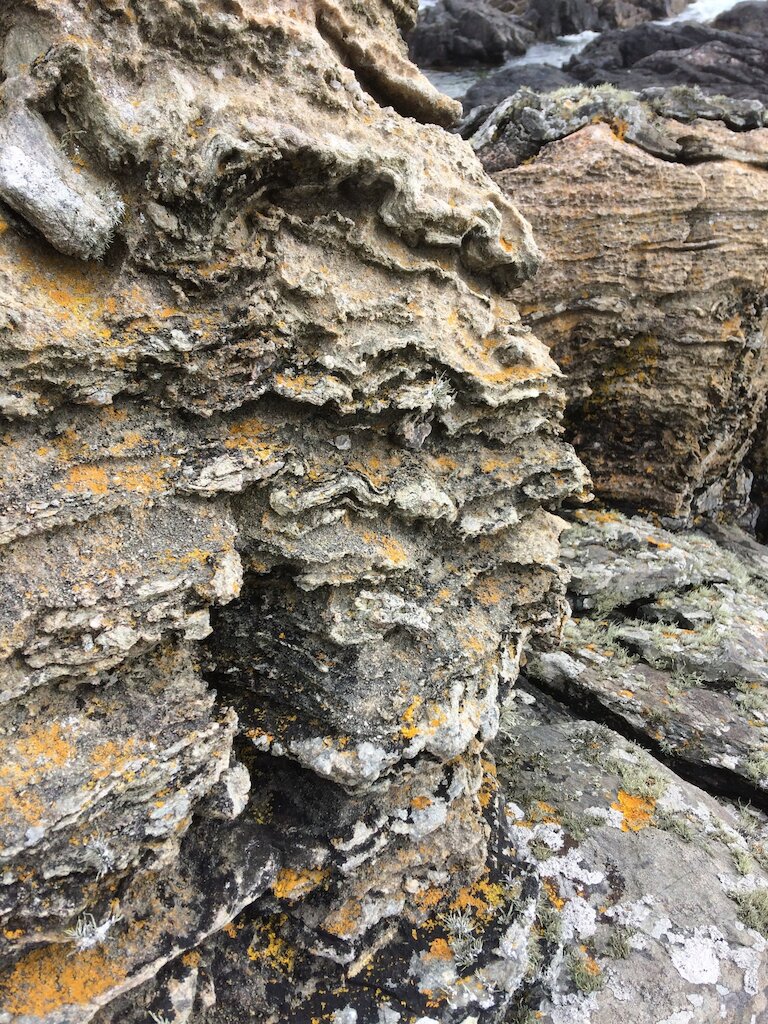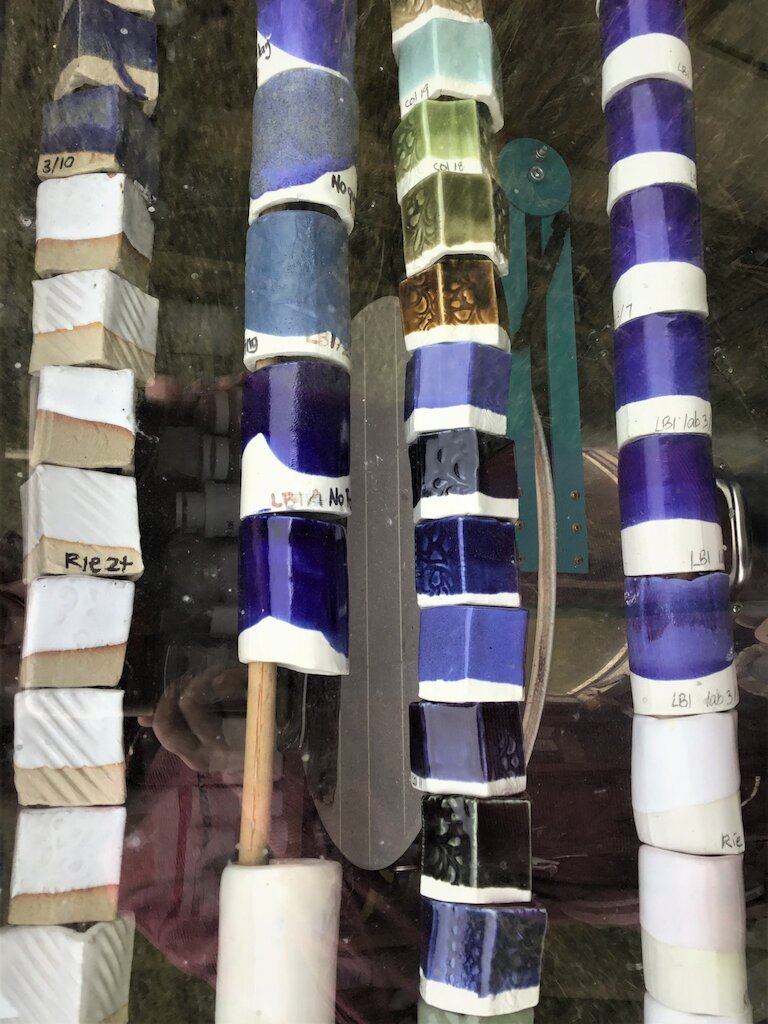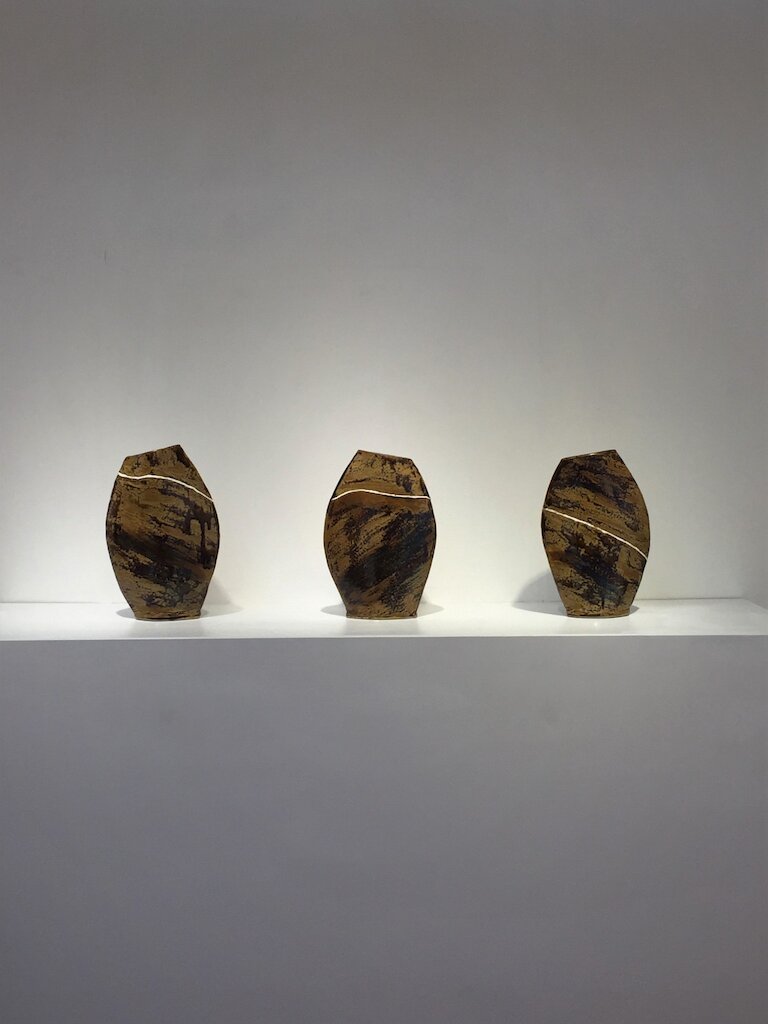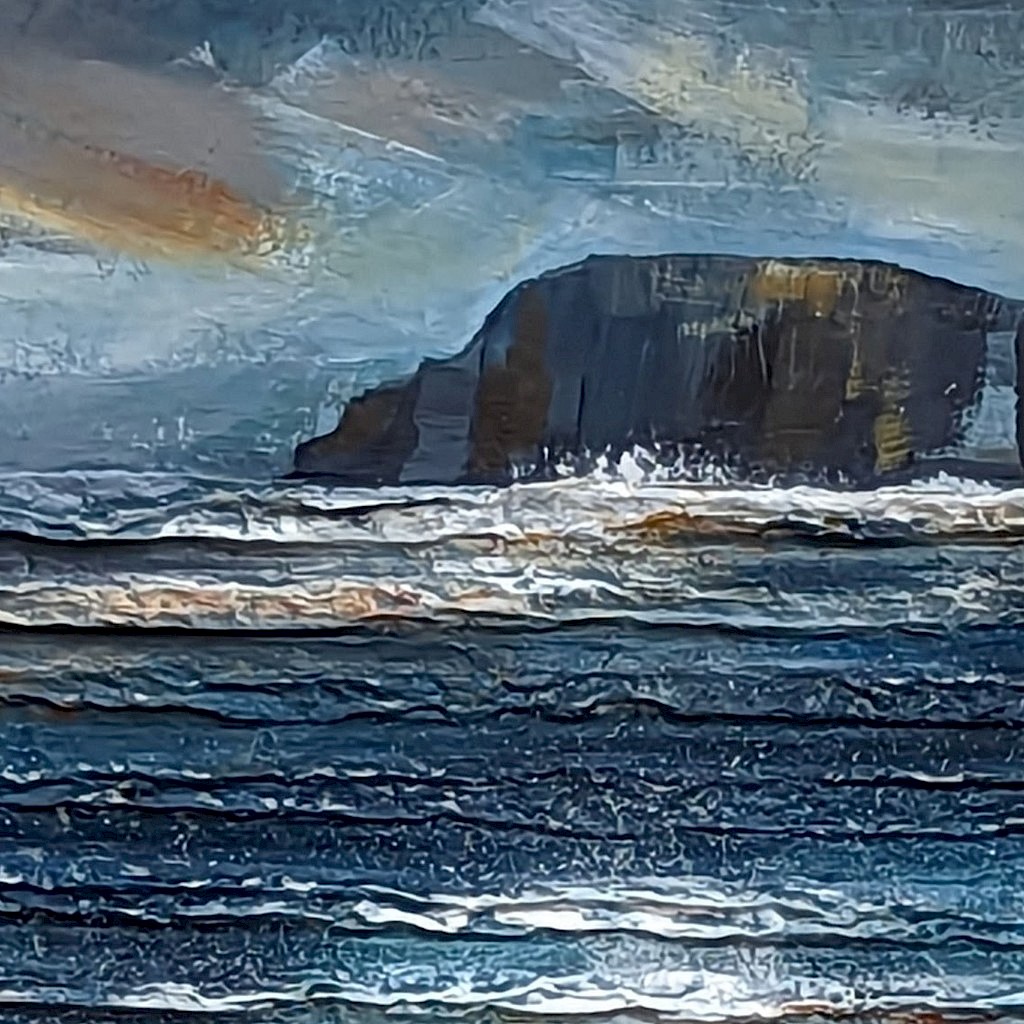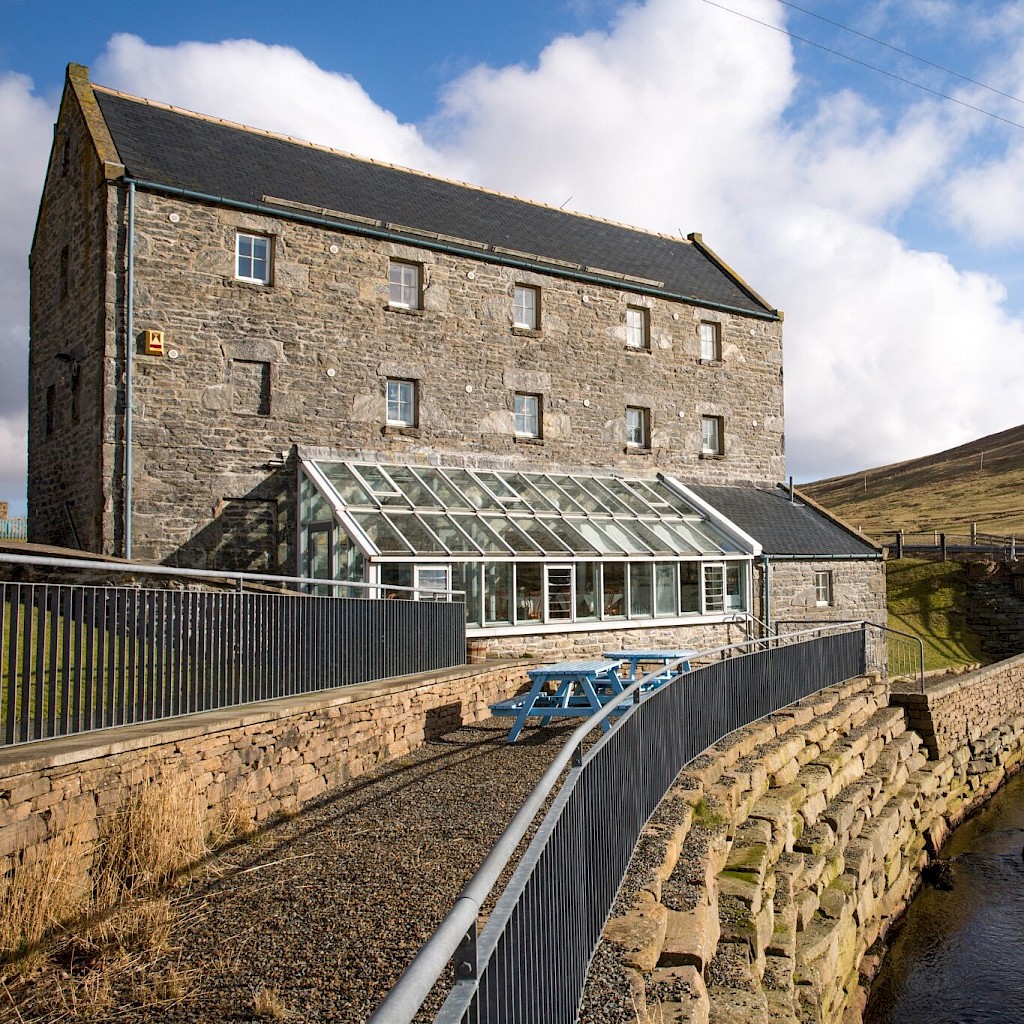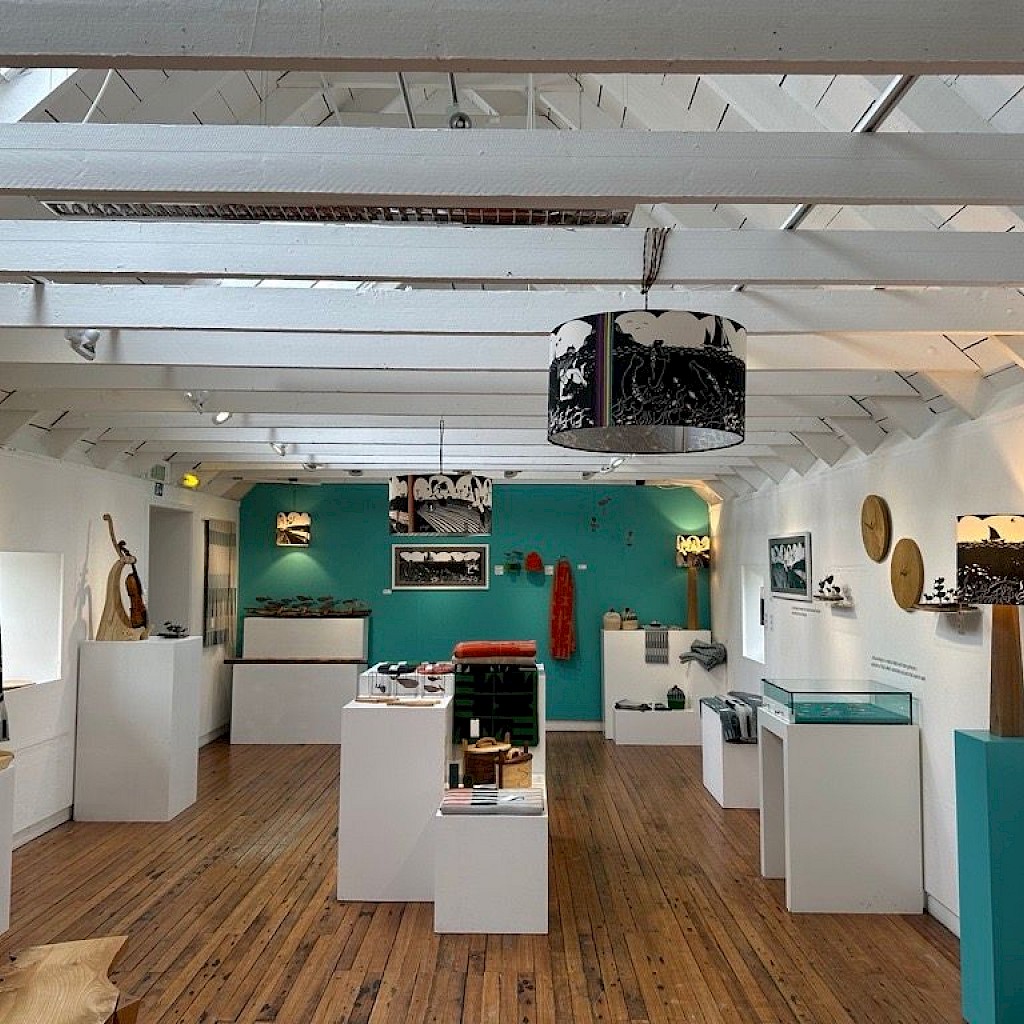Ways of Seeing
Crosswinds and currents, tide and drift, ebb and eddies have brought me to Shetland. I have been mesmerised by islands all of my minding. My family belongs to a small island community. My Great Great Grandfather was a fisherman, as was his father, and my Great Grandmother helped mend nets and make lobster pots. My Grandfather made the design drawings for the Britten Norman Islander planes that have served small communities for many years, so being an islander is in my blood. It was this island spirit that spoke to me when we arrived in Shetland off the ferry one grey morning some 10 years ago.
Islands create boundaries, the ever-changing margins where the land ends and the sea begins. The line of separation is fluid, sometimes sublime, often violent, shifting, unstable and uneven. In this turbulence lie riches; an otter dipping and diving in the kelp, sinuous and agile in the water and sea birds high on sheer cliffs amid a cacophony of sound and activity.
Erosion is profound. Powerful waves hurl themselves ferociously at the shore creating arches, caves, sea stacks and geos, storm beaches and sandy stretches. Much of the rock around North Roe comes from volcanic activity with quartz and feldspars littering our beaches. These rocks, boulders and pebbles that we tread underfoot provide the main ingredient of clay bodies and glazes. The manipulation of silica is at the heart of ceramics. Modern technologies mean that clays are made to a recipe to suit the potter but naturally formed clays can be found nearby. Steatite or talc, with generations of names carved into the soft rockface and other materials are deposited amongst the cliffs and gullies. Shell sand made from tiny crustaceans gives the potter access to another essential ingredient for glazes, calcium. All the raw materials are here.
Each and every piece I make tells the story of our wilderness...
I am in my workshop and the sun is streaming through the window. How can I interpret my love of this magical wildness? How can I begin to explain that the very nature of our ancient rocks? The solidness and density of its state and the very mystery of its spectacular beginnings fills me with awe and wonderment. Each and every piece I make tells the story of our wilderness, of how the rock was formed and folded, super-heated, cooled and eroded.
Access points to the sea and safe places to moor boats have influenced where our ancestors chose to build their homes and these communities have grown and developed using the natural resources available to hand. Generations of families have walked these hills and shores, tended animals, raised crops, fished, cut peat, told stories and made music. The seasons bring a framework of steady progression, a quiet order, a right time for everything. Lambs arrive, peats are cast, tatties are planted, hay is cut, sheep are clipped and the harvests are gathered in before the winter storms begin. As the New Year arrives our hearts turn towards new beginnings. There is the time to celebrate the return of the sun, a time for newly lain eggs, a time to eat mackerel and the time for setting kale.
There are paths, maybe just indents in the grass, where feet have passed for centuries. The sheep walk in the footsteps of their mothers and grandmothers as they move in single file, nose to tail. There are echoes of voices about our homes and the gentle lilt of distant melodies in the stone walls. The starlings that nest in the peat shed return year on year, and the bog-cotton and wild orchids bloom just as they did last year and the year before. The world turns and the year moves on.
Back in the day of our ancestors, furniture, clothes and shoes were made and repaired, tools were fashioned from offcuts, food was salted and dried, nothing was wasted, and everything valued. Those with hardworking, careworn hands fed their families and their animals, landed fish at the behest of the landlord in appalling weathers and knitted by candle light, squinting into the semi-darkness. I wonder, for those who had so little, what did they hold dear? Was there some special treasure that brought joy? Maybe it was a fiddle passed from father to daughter, or a special basket made from dockens? Was it a jug that Granny kept for Sundays or a salt box made by an Uncle? Was it the little chipped flowery bowl used for collecting warm brown eggs from the hen house or an embroidered lace hankie that Mother kept for special occasions? These everyday items tell the extraordinary stories of the lives of ordinary folk and are fundamental to the work I produce today.
The Pottery in North Roe began 6 years ago when we converted an outhouse into a small ceramics workshop. Through a large window there are views across the voe towards Skelberry to the south and from the door I can see the imposing bulk of Da Bjurgs which sit solidly to the west.
I work with an iron bearing clay which I roll out in to sheets with a slab roller. To give coherence to my work I cut out shapes using templates which have been carefully planned and developed. I like to have pattern on both the inside and outside of my work and here I bring to mind the essence of ages past. The inner texture might resemble a piece of patterned wallpaper or the design of a remnant of fabric. The outer texture is from items that symbolise courage and endurance, the lace from the hankie, the rope from a homemade keshie, or patterns and shapes taken from a favourite jug. I imprint found items from the croft or the beach into the clay, or use handmade clay stamps to mark and represent memorable moments for the families who lived round about.
During the rolling, forming and drying process each becomes organic in nature and has its own uniqueness. I emphasise the lines of making. These lines and shapes mirror the paths and contours we each have in our lives. The glazes I used are continually being developed to reflect the colours and textures of the wildness of Northmavine. The kitchen is at the heart of every home and most of the work I make is designed for everyday use, for the sharing of meals and for warm companionship. My pieces are fired in an electric kiln to stoneware temperatures giving them strength and durability.
My colour palette is inspired by the Shetland landscape; bright days, grey skies, barren rock, lichens, mosses, wild flowers, turquoise water, angry seas, moorland and heather. These muted colours are reflected in the glazes. Walk along any beach in Northmavine and you will find feldspars, granite, and other minerals and ores, these are the building blocks of ceramic glazes that give the work its tough outer shell and make it beautiful, yet practical to use.
For this year’s ShetlandMade exhibition I have created three sculptural vessels inspired by the sea stacks around Shetland. Sea stacks stand sturdy and solid against a constant onslaught of powerful wave movement. These Rock Vessels symbolise resilience, endurance and stamina, fortitude and strength.
Rock
Just a lump of rock
Faced and polished
Honed and perfected
Sharpened for hunting
Just a lump of rock
Dressed and smoothed
Evened and shaped
Turned for grinding
Just a lump of rock
Layered and balanced
Measured and considered
Assembled for shelter
Sharon McGeady, 2019
